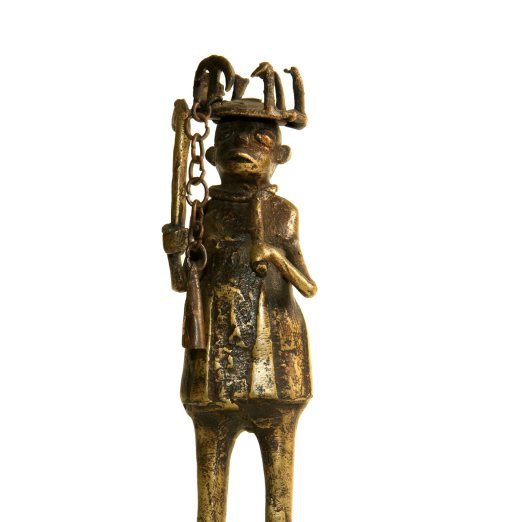Our Global Neighbours: God of War - Two Incarnations
The royal palace in Abomey was the centre of the Dahomey Kingdom. Through the 17-19th century twelve kings in turn presided over the prosperity of the Fon people.
The Royal Court indulged in elaborate ceremonial splendour. The King’s glory was magnified by extraordinary court art. This unique aesthetic blossom was the work of local artists. Many iconic pieces can be linked with individual artists and their families through which they acquired technical skills and artistic ideas.
The splendour of Abomey court vanished when the French Colonial Force invaded the Kingdom in 1892 and the royal palace was destroyed. Among numerous art pieces plundered by colonisers, was a man-sized sculpture representing the God of War, Gou. This iron statue has amazingly ‘modern’ characteristics and it would stand proudly alongside the sculptures of Alberto Giacometti (1901–1966) and other artists of Western modernity.
The figure of God Gou made its way to the Musée du Quai Branly in Paris, where it still graces the Museum’s extensive collection of African art.

© Australian Museum
In the early 1980s the Australian Museum acquired a bronze sculpture of the God Gou. It was donated among about 150 African masks and sculptures, by William Bowmore, a businessman and generous philanthropist from Newcastle (north of Sydney).
Our Gou came also from the King’s palace in Abomey. It is 23cm high and stylistically different from its larger ‘sibling’ which resides in Paris.
Explanations:
Abomey is a ‘city’ in the Zou Department of Benin, previously the capital of the Kingdom of Dahomey (about 1600-1900 AD) and in the Republic of Dahomey (1960–1975) which became present-day country Benin.
Benin is also a city (about 1.5 million inhabitants) and the capital of Edo State in southern Nigeria. Like Abomey it was invaded, destroyed and plundered by the British ‘Punitive Expedition’ in 1897 and many famous Benin bronzes were taken to the United Kingdom.
AD or the Common Era indicates the period of time between year one and the present in the Western Calendar.

